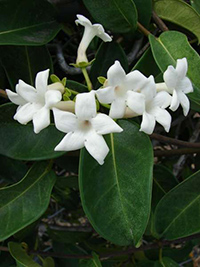Table of Contents
The condurango plant is known and highly appreciated in South America, where it is used to cure stomach conditions. The native term condurangu (condor lima) points to the legendary tradition of the Andean condor, which used the leaves of this plant to heal itself from snake bites.
- Nature’s Joint Supplement – Many of us face various obstacles that can affect our comfort levels when it comes to occasional aching or sore joints, but with our Condura joint health supplement, you can fight back!
- Maintain Life in Motion – Unlike some joint supplements for people with aches and pains, the properties of this South American bark promote a more positive feeling to everyday discomforts, helping you to stay healthy and at your best.

It was introduced to Europe in 1871 with the hope it would heal stomach cancer. However, this hope was false. The condurango plant possesses a mildly bitter, sour taste that resembles cinnamon.
Condurango Plant Scientific Facts
- Other names: Marsdenia condurango Rb. Ch.
- French: Condurango.
- Spanish: Condurango.
- Environment: This is a climbing plant of the Asclepiadaceae family that sticks to the trunk of trees until reaching the top. It has oval or heart-shaped hairy leaves that are light green on the underside.
- Parts of the plant used medicinally: The root and the bark of the stem.
Healing Properties and Warning

The root and bark of condurango contain essential oil, resin, organic acids, gummy substances, and starch. Condurangin, a bitter glycoside, is its most crucial active component.

Condurango has appetizer, digestive, and antiemetic properties. Its use is recommended for bloated stomachs and slow digestion. It also eases stomach spasms and aches, although it must not be used before diagnosing the disorder’s cause.
WARNING! When used in high doses, it has toxic effects, leading to convulsions and even respiratory failure.
How to use Condurango
- Decoction with 30-40g of bark or root in half a liter of water, boiling for 10 minutes. Then steep for 12 hours as a cold extract. Take from three to five spoonfuls before each meal.
Frequently Asked Question
What are the main compounds believed to offer health benefits?
Condurango contains a class of compounds called condurango glycosides. These complex molecules are considered the primary active ingredients within the plant.
What types of cancer has the plant been studied for?
Research has primarily focused on condurango’s potential effects on stomach cancer. Some laboratory studies suggest it might have activity against particular cancer cell lines.
Does the plant have anti-inflammatory effects?
Condurango extract may have anti-inflammatory effects.
How is the plant traditionally used to support digestion?
It is believed to stimulate the production of saliva and stomach juices, which may improve digestion.
Are there established dosages?
Dosage recommendations can vary. Traditional uses and herbal preparations may have different guidelines. It’s essential to consult a healthcare professional well-versed in herbal medicine for individualized dosage and safety advice.
Can the plant interact with medications?
It’s always best to discuss potential interactions with a healthcare professional. Due to the lack of extensive research, it’s unclear if this plant can interact with specific medications.
Are there known side effects?
The plant is considered relatively safe at recommended dosages. However, some people may experience mild side effects, such as nausea or changes in appetite.
Are there populations who should avoid using this plant?
Precaution is advised for pregnant or breastfeeding women due to a lack of safety data. Individuals with existing medical conditions should always speak to their doctor before using the herb.
Is there scientific solid evidence to support the health claims?
While preliminary research shows promise, more extensive and rigorous human studies are needed to establish the full scope of the plant’s potential health benefits.
Where can I find reliable sources to learn more about this plant?
Reputable sources include:
National Center for Complementary and Integrative Health (NCCIH): https://www.nccih.nih.gov/
PubMed (for scientific publications): https://pubmed.ncbi.nlm.nih.gov/
Credible health and natural medicine websites
DISCLAIMER: All content on this website is presented solely for educational and informational objectives. Do not rely on the information provided as a replacement for advice, diagnosis, or treatment from a qualified medical expert. If you are pregnant, nursing, or have any preexisting medical concerns, talk to your doctor before using any herbal or natural medicines.
REFERENCES
- George D. Pamplona-Roger, M.D. “Encyclopedia of Medicinal Plants.” George D. Pamplona-Roger, M.D. Encyclopedia of Medicinal Plants. Ed. Francesc X. Gelabert. vols. 2 San Fernando de Henares: Editorial Safeliz, 2000. 454. Print. [condurango plant]
- https://www.ncbi.nlm.nih.gov/pmc/articles/PMC4573805/
- https://www.rxlist.com/supplements/condurango.htm
- https://www.webmd.com/vitamins/ai/ingredientmono-631/condurango
Last update on 2024-07-23 / Affiliate links / Images from Amazon Product Advertising API





